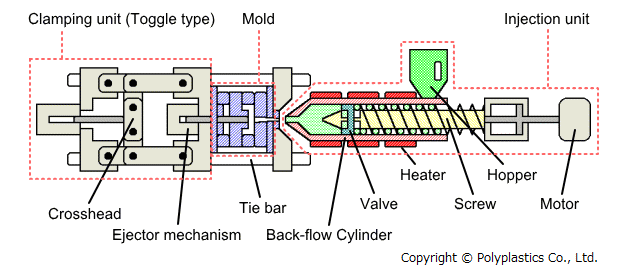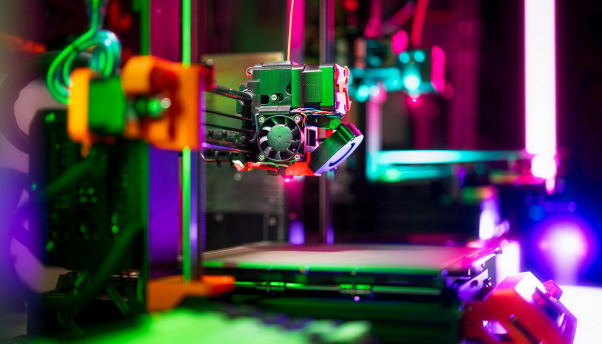Do you face poor part quality, low throughput, and excessive manufacturing expenses? CNC milling eliminates those problems directly as it provides accurate machining for more sophisticated components that are highly efficient and cheap. In this guide, we’ll explain CNC Milling, its advantages and weaknesses, how to pick the best supplier, and more. So it’s wise not to skip!
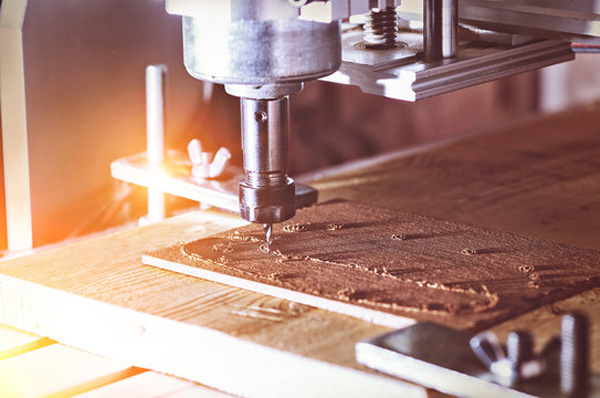
1) What is CNC Milling?
CNC Milling is the process of cutting a workpiece by removing excessive parts of it using a rotating, computer-controlled cutting device. The PC enables the creation of sophisticated designs on the workpiece.
This method is predominantly utilized by manufacturing industries that require the utmost precision for complex components. All tasks are carried out with the help of a CNC milling machine that works from prepared commands, which guarantees precise and uniform results.
One of the main differentiating points of CNC milling is that it can work with different materials, which include metals, plastics, and composites. It is also used in aerospace, automotive, and medical device manufacturing. CNC milling allows for faster production, minimizes human mistakes, and can achieve complex details, unlike manual machining.
Different Types of CNC Milling Operations
Milling on CNC machines has many processes tailored to particular manufacturing demands. The more common ones include:

i) Face Milling: This process produces a level surface by removing a thin material layer from the workpiece. This process is mostly done in the preparation stage of machining for workpieces.
ii) Plain Milling: Also referred to as slab milling, this means cutting layers adjacent to each other on a flat surface by a rotating cutter. This process is mostly used on big, flat parts that are simple in shape.
iii) Angular Milling: This method is applied when the tool head carrying the cutting tool is set in a tilted position, producing chamfered or slanted surfaces. Gears and several other parts with angles are manufactured by this method.
iv) Form Milling: In form milling, special cutters with particular shapes are used for the contouring processes. These include forming convex and concave shapes, as well as other free forms without additional machining.
v) Slot Milling: This operation works to create the specified width and depth by cutting a groove on the workpiece. It is necessary to make keyways, pockets, and channels in the components.
Each of those operations has a defined purpose to accomplish in CNC milling processes and provides versatility for fabricating different parts.
Tips for Selecting Materials for CNC Milling
Selecting the right material for CNC precision milling is critical for obtaining the desired output product. The following points can be of help when selecting the materials:
! Material Hardness: Stainless steel and titanium are harder materials, which require tougher cutting tools and slower speeds. Softer materials like aluminium and plastics are much easier to machine.
! Thermal Conductivity: Excessive heat from tooling may cause deformation or burning in some composite materials. Metals such as aluminium dissipate heat well, so they are useful for high-speed milling.
! Surface Finish Requirements: Aluminum and brass can provide a smooth finish, however, harder metals would require additional finishing processes in order to provide adequate surface texture.
! Application and Strength Requirement: The intended purpose of the item should be kept in mind. Parts for aerospace and automobile industries use tough and temperature-resistant metals. Consumer items may utilize lighter-weight plastics.
! Cost and Availability: Finding sources for particular materials may be costly and difficult. It is essential to achieve the right balance between spending and quality to ensure that production is effective.
Choosing the right material helps you achieve the requisite accuracy, strength, and efficiency required for effective CNC milling.
2) How does CNC Milling work?
CNC milling incorporates the use of a computer system that controls the movement and rotation of a cutting tool to perform work on a large piece of material called a workpiece. This innovation makes it easier for manufacturers to create precise and detailed components since the work is performed automatically.
- CNC Milling Process Step-by-Step
Step 1) Designing the Part: Creating a digital part that is based on the design that was created is the first task. This is done using CAD (Computer Aided Design) software. AutoCAD or SolidWorks can be utilized as they allow the engineer to build the component with the correct shape, size, and additional features.
Step 2) Converting the Design into CNC Code: The CAD design is loaded into a program specifically created for CNC; this is done using CAM software. The CAM software converts the 3D model of the design into a milling machine-ready format, called G-code. This tells the machine where to go, where cuts are to be made, and the cutting speed.
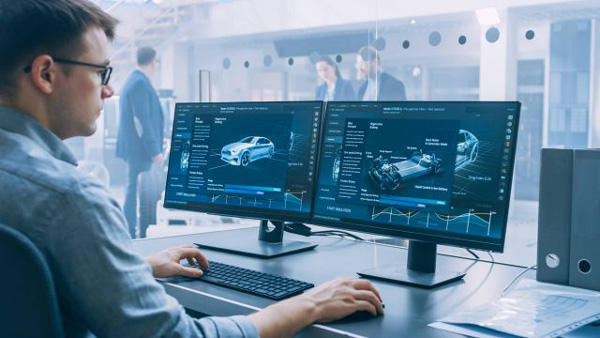
Step 3) Preparing the CNC Cascading Machine: Before the precision CNC machining process starts, the operator fastens the workpiece, which consists of metal, composite, or plastic on the milling table. The appropriate tool is selected in accordance with the material and the type of cutting that needs to be performed.
Step 4) Conducting the Milling Process: With a CNC cascading machine, the programmed instructions are executed with high-level accuracy. The workpiece is cut by the tool while moving on several axes, and the tool itself rotates at very high rpm. CNC milling machining can be 3-axis, 4-axis, and now even 5-axis, which allows for more complicated and detailed designs to be created.
- 3-axis milling is intended for flat and less complex sections and moves in the X, Y, and Z directions.
- When 4-axis milling is used, rotation about one axis is added, enabling cuts at a desired angle.
- 5-axis is the most flexible milling and allows movement in five directions at the same time, leading to the manufacturing of highly complex parts.
Step 5) Inspection and Quality Control: Post-milling inspection is important to ensure the piece is made to the required standards and specifications. Tools such as callipers, micrometres, and coordinate measuring machines (CMM) are inspection devices. Lastly, finishing touches like polishing, anodizing, or special coating can be used to enhance the look and strength of the workpiece if needed.
- Why CNC Milling is Effective
The effectiveness of CNC milling stems from precision, efficiency, and repeatability. It leads to the reduction of human error, decreases material wastage, and works on the production of intricate components that manual machining processes could never dream of accomplishing. Irrespective of industry, be it aerospace, automotive, or medicine, CNC milling guarantees quality manufacturing on demand.
3) Advantages of the CNC Milling Process
Why is CNC milling used? What are the benefits? Okay! CNC (Computer Numerical Control) milling has enabled evolutionary changes in modern manufacturing systems by providing benefits over traditional machining processes. It also provides great accuracy, effectiveness, and diversity of operation to different sectors. Listed below are the main benefits of CNC milling.
+ High Precision and Accuracy: Perhaps the biggest advantage of CNC milling rests with its ability to achieve a very impressive degree of accuracy and repeatability. CNC machines operate on a set of pre-programmed instructions, and as such, cutters are allowed to move in the X, Y, and Z axes. This results in achieving tolerances close to ±0.001 inches (0.025mm).
Yes! This level of accuracy is critical for industries such as aerospace, medical, and automotive manufacturing, where even a slight mistake can impair performance.
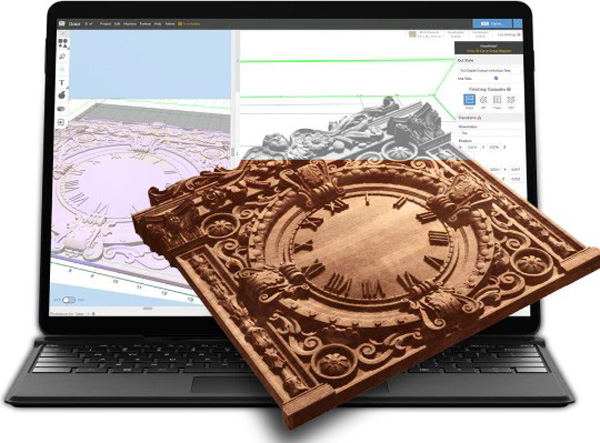
+ Increased Productivity: Milling with a CNC machine is almost automatic and does not require sustained physical presence. A CNC machine that has a design provided can work all day and all night, which increases productivity and also saves on labor costs. Also, the ability to use several tools in one apparatus increases the speed of production even more.
+ The Range of CNC Milling Materials is Huge: CNC milling can be done on a large spectrum of materials, such as:
- Metals: Aluminum, Stainless Steel, Titanium, Brass
- Plastics: ABS, Nylon, PEEK, Polycarbonate
- Composites: Fiberglass, Carbon Fiber
This enables the manufacturing of components for diverse sectors, including the medical, aerospace, and others.
+ Advanced Multi-Axis CNC Machines: CNC-controlled machines are now capable of doing detailed and intricate milling. Using 3, 4, and 5-axis CNC milling enables detailed engine pieces, medical prostheses, and custom molds.
This functionality highlights the need for additional setups at different stages for increased accuracy and efficiency, thereby shortening the overall time of machining parts.
+ Cost-Effectiveness and Waste Reduction: Though CNC milling has a heightening price tag, it does help in minimizing expenditures incurred during the rework process as well as in the destruction of resources in the long run. Thanks to the precision of CNC machining, all materials used are value for money spent. Moreover, with fewer mistakes made, less is spent on rework, saving both time and capital.
+ Safety and Automation Benefits: There is a reduction in workplace injuries due to accidents from misuse of tools because CNC milling does not require active human control while the machine is running. This greatly improves safety in the workplace and is beneficial for periods of prolonged or bulk production.
+ Scalability for Large-Scale Production: CNC milling does not lose much functionality with time, making it easy to adjust while creating a prototype or during bulk production. After inputting the design, the machine independently manufactures a large number of parts without any further input required. Such tools are important to the automotive and consumer electronics industries because high quantities are always needed along with extreme accuracy.
+ Effortless SDK Integration into CAD/CAM Software: CNC milling machines CAD and CAM integration is seamless, enabling the efficient creation of parts. Engineers are able to alter designs, run simulations, and refine machining tactics long before production actually starts. This minimizes mistakes, conserves resources, and maximizes effectiveness in manufacturing activities.
4) Disadvantages of the CNC Milling Process
CNC milling has its fair share of benefits and drawbacks. Being aware of these cons allows individuals in the manufacturing sector to choose the appropriate machining method for their requirements.
– Expensive Setup Costs: CNC milling machines are more costly than manual machines. A quality CNC milling machine, depending on its complexity and capabilities, can cost anywhere between USD 50,000 and USD 500,000. In addition, there is also a need for CAD/CAM software and employee training, which adds to the general expensive setup.
– Need for Skilled Labor and Programmers: With automation in CNC milling, operators are still required, as are knowledgeable programmers.
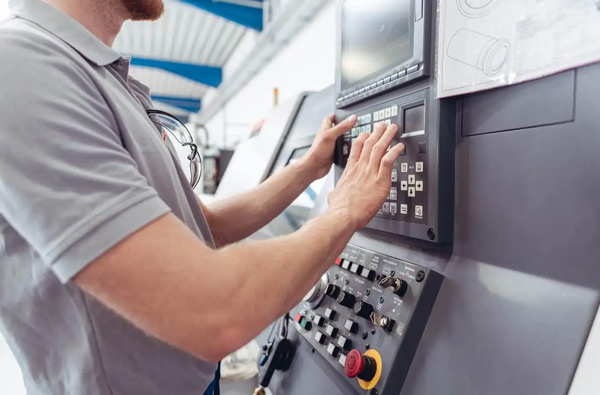
- Precise instructions on how to machine the piece need to be accompanied by G-code programming instructions.
- Operators need to know tool choice, production rate, and equipment settings to avoid bottlenecks during production.
- Due to a lack of complex machinery, addressing more simple tasks such as replacing worn tools and other machine faults, require more sympathetic knowledge.
Skills development on CNC machines is expensive when accounting for time and resources.
– Range Restrictions to Volume and Geometry: CNC milling is great for deep cavity 3D parts. It is, however, limited by the tool’s ability to produce thin walls and intricate internal geometry features. In some cases, some of these features may need supplementary machining processes such as electrical discharge machining (EDM) or laser cutting.
– Waste of Materials and Energy: CNC milling is essentially a subtractive form of manufacturing. It uses a machine to shape a component by cutting away material from the workpiece. As expected, CNC milling has substantial material waste when too much material is removed, especially with costly metals, as is the case with titanium and stainless steel.
CNC milling also wastes a lot of energy, which raises the cost of operation, particularly for bulk production.
– Costly Servicing and Care: Accuracy and breakdown issues of CNC machines result in the need for regular care to maintain accuracy and, as a result, downtime and production loss. With issues from tool wear, spindle failures and software errors, everything brings the CNC machine to a standstill. As with any mechanical component, these repairs and replacements add a long-term burden to operational expenses.
– Less Flexibility for Quick Design Changes: After a program is set, amplifying modifications to the design can become quite tedious. In contrast to personal machining, where adjustments can be made in real-time, CNC milling handles changes with resetting of the program and tool adjustments, which can impede speedy projects.
5) What is a CNC Milling Machine?
A CNC (Computer Numerical Control) milling machine is an automated piece of machinery that specializes in cutting, shaping, and drilling a material with great accuracy. The machine functions on set parameter commands, eliminating the need for the operator’s direct input.
Almost every field, including automotive, aero, medical, electronics, and others, uses CNC milling for its precision and efficiency as well as its ability to take on difficult designs. As we discussed a while ago, unlike manual milling, where an operator guides the movement of the cutting device, CNC milling machines use computerized device mechanisms instead.
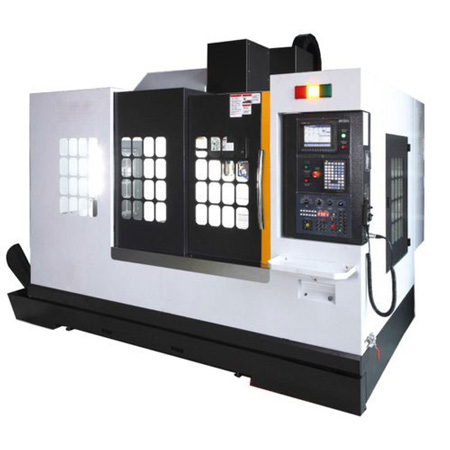
Types of a Milling Machine
CNC machines are created for various tasks. There are many types of CNC milling machines, with the following as the primary categories:
a) Vertical Milling Machines: The cutting tool is housed within a spindle that is vertically oriented, not the workpiece. The tool moves up and down or sideways while the workpiece does not. These machines have uses in drilling, slotting, and contouring.
- Advantages: Easy to set up, very simple to operate, best suited for small to medium scale parts.
- Applications: Used in making automotive components, making molds, and for engineering precision work.
b) Horizontal Milling Machines: These machines have the spindle placed at a horizontally positioned angle. They are suitable for intensive machining operations because they utilize numerous vertical milling tools. These machines beat vertical CNC mills in speed and intensity of machining.
- Advantages: Ideal for mass production, cost-effective, proven beneficial where intricate surfaces need to be manufactured, and best suited for medium and large corporations.
- Applications: Used for cutting gears, making large metal components, and for industrial machinery parts.
c) 3-Axis, 4-Axis, and 5-Axis CNC Milling Machines: All these CNC machines have unique complexities. The first is the most basic, and it is widely accepted, as the tool can make three movements: up, down, and sideways.
- 3-Axis Milling: The tool makes three movements: up and down, sideways, and forwards/backwards.
- 4-Axis Milling: Adds the ability to rotate movement along the three axes to make more intricate cuts.
- 5-Axis Milling: Achieves the highest flexibility due to the ability to move in five directions. It finds its application in Aerospace, automotive, and medical fields where accuracy is of utmost importance.
d) Gantry Milling Machines: Gantry milling machines have an overhead frame that accommodates the cutting tool and supports it. For massive workpieces that need great precision, these machines are ideal.
- Advantages: Exceptional rigidity and powerful machining of large components.
- Applications: Parts for aerospace industries, ships, and heavy machine tools.
e) Compact and Benchtop CNC Mills: These mini machines are used for prototyping, hobby work, or small-scale production with CNC features.
Advantages: Cheap and space efficient, perfect for beginners and small companies.
Applications of CNC Milling Machines
This section is focused on the various uses of the CNC milling machine. The bulk of CNC machines have various designs and model types, which is why the scope of their application is quite big;
+ Aerospace Industry: The aerospace sector requires very high precision since any small deviation could lead to performance failure. Some of the products manufactured using CNC milling are:
- Parts of the aircraft’s pulsating engine
- Parts of landing gears
- Streaming structural components for aircraft and spacecraft
+ Automotive Industry: CNC milling machines are being used for the high accuracy and consistency needed to create integral parts of vehicles.
- Engine blocks and cylinder heads
- Transmission parts
- Components of the brake system
+ Medical Sector: Microscopic precision is essential in the CNC milling of devices and implants in medicine, such as:
- Surgical tools
- Prosthetic limbs
- Dental surgery implants
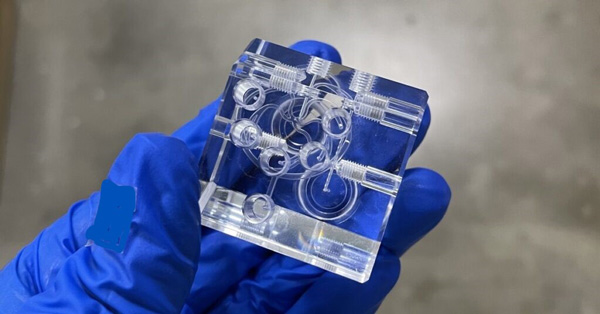
+ Electronics and Semiconductor Sector: CNC millers manufacture intricate structures found in small devices such as computers and smartphones.
- Printed circuit boards
- Cooling devices
- Enclosures for phones and laptops
+ Defence and Military: CNC milling has significant applications in arms and military equipment production.
- Parts for firearms
- Components for armored vehicles
- Radar and communication systems
+ Mold and Die Manufacturing: CNC milling capabilities enable the construction of highly accurate molds for producing plastics using injection molding and die-casting. Such molds are essential for the mass production of consumer and industrial products.
+ Custom and Prototyping Work: These tools are very effective for prototyping and product design. All parts can be produced and assembled within strict deadlines for testing before the complete model is manufactured for use.
6) Who is the Best CNC Milling Partner for You?
The choice of a CNC machining partner is fundamental for getting the right manufactured parts in the appropriate quality and on time. This field is well covered by GS Proto, as one of the best service providers, as they can do virtually any work related to manufacturing.
- Why Choose GS Proto?
GS Proto positions itself as a leader in the field for the following reasons:
! Deep Knowledge and Sophisticated Infrastructure: GS Proto has specialised in the custom production of different types of parts and assemblies from various materials for over 20 years. In addition, the industry possesses 300 other advanced machines at hand, ensuring that the project is delivered with the utmost efficiency.
! All-in-One Service Provider: GS Proto has the capability to provide the following services:
- CNC Machining Services: Advanced level PC controlled precision machining services including Tool, Mold Making, and Parts Production for low volume and Prototyping in any Material and Industry.
- Sheet Metal Fabrication: You can order high-quality parts made from metal like Aluminum, Brass, and Stainless steel with precise cuts and bends at competitive prices.
- Vacuum Casting Service: Provided for small batches and prototype parts, production quality rubber parts are delivered without tooling expenses.
- Injection Molding Service: This is a Flexible and cost-efficient method for the mass production of quality plastic parts. More than 100 material types are available without advanced minimum order requirements.
- 3D Printing Services: Every prototype can be produced within 24 hours using SLA and SLS methods of printing in selected plastics or rubbers for design evaluation.
- Surface Finishing Services: Specialized machining operations are performed to achieve the required level of detail and also enhance the aesthetic appearance of custom-made parts.
! Quality Assurance and Certifications: We at GS Proto have always paid special attention to quality with ISO 9001 certification and further expanded quality management to medical devices standard with ISO 13485. To further include the automotive industry, we have included the IATF 16949 and ISO 14001 to incorporate environmental responsibilities along with our D-U-N-S® Registration.
! Efficient and Responsive Service: We understand the importance of deadlines in production, which is why we are glad to offer:
- Effective communication: All clients receive replies within 1 hour and are given quotes accurately within 24 hours.
- Quick delivery: Depending on the project details, parts are delivered anywhere from 1 to 3 days.
- Custom Production: Clients are provided with rapid prototypes and low-volume manufacturing or on-demand production options, guaranteeing that they will receive the required parts.
- How to Collaborate With GS Proto
Access the GS Proto site and upload your CAD design file. Our engineering team will attempt a Design for manufacturability (DFM) assessment to tailor your design to be more cost-effective. After the DFM process, a quote detailing your design, materials, and production needs is sent to you. After your confirmation, production begins, and you will be informed of the progress regularly.
You can contact us anytime: [email protected]
7) FAQs
1. Why is CNC milling crucial in contemporary industries?
CNC milling increases precision, efficiency, and consistency when crafting intricate components. It minimizes mistakes, increases the pace of production, and guarantees top-quality parts across several sectors, including aerospace, automotive, and medical devices.
2. What are the primary benefits of using CNC milling?
CNC milling offers high accuracy, repeatability, and automation whilst also enabling versatile selection of materials which reduces labor expenses and increases productivity relative to manual machining.
3. How do you find the most suitable CNC milling machine?
Core factors when choosing a CNC milling machine are project specifics, the material, type of machine, and anticipated production rates to maximize performance and minimize cost.
4. Is CNC milling easy?
CNC milling is complicated for most novices since programming, knowledge of the material, and proper machine setup are mandatory skills. But with time, it transforms into a precise and effective process, enabling the manufacturing of complex parts with the utmost accuracy.
5. What is the process for customers to work with GS Proto?
Customers can upload their design files on the GS Proto’s website, and after obtaining a DFM review, they can receive a detailed quote, and then the production can commence. The procedure guarantees accuracy, ease of communication, and timeliness in the delivery of quality CNC-milled parts.
8) Conclusion
Besides its capacity to combine multiple processes into a singular operation, CNC milling enables accurate and efficient manufacturing in all sectors. Knowing the operations, benefits, drawbacks, and applications of CNC milling enables a business to procure the right solutions suited for them. Despite the drawbacks of CNC milling, it remains the most critical process for modern manufacturing due to its unparalleled part-produced complexity and accuracy.
Honestly speaking, GS Proto is an ideal partner for businesses looking for a dependable CNC milling supplier due to our outstanding facilities, professional staff, and excellent service delivery time. Go to GS Proto’s website to find out more about the quality CNC-milled parts you need.


